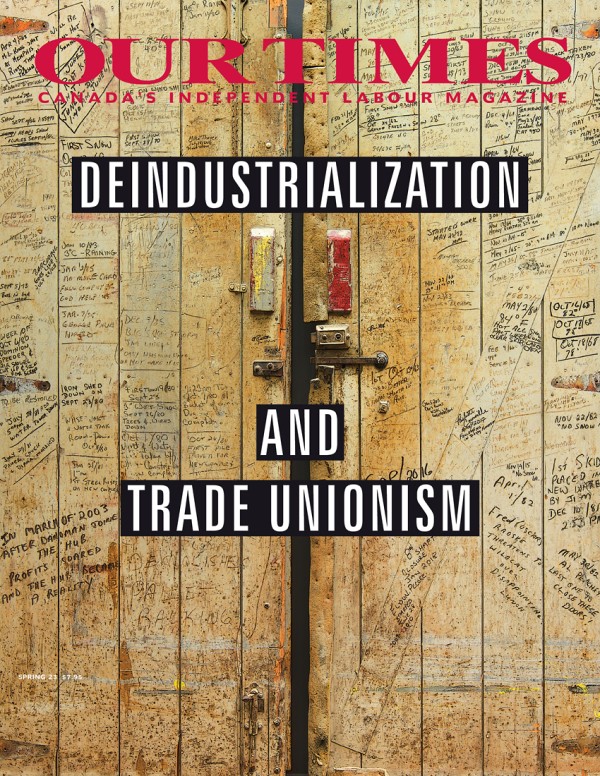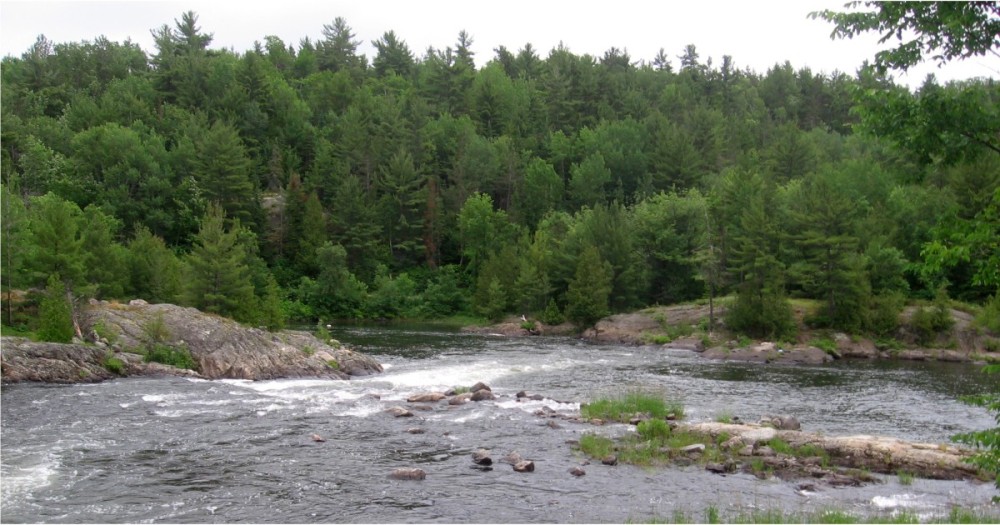The postwar period is usually seen as a time of relative prosperity for Canadians, but the Cold War uranium boom meant the establishment of 12 mines in my homeland, leading to environmental devastation. The establishment of a settler town at Elliot Lake, which sits between Sudbury and Sault Ste. Marie in what is now called Northern Ontario, led to an influx of miners, many of whom brought their families once homes became available at the town site. Serpent River First Nation community members still face the lingering effects of a sulphuric acid plant that was built in the middle of the reserve in 1957 to process uranium from the mines, even though the plant was hastily abandoned in the early 1960s when demand for uranium fell and production ceased.
I share this story as an historian, and while this piece is based on my monograph, Serpent River Resurgence: Confronting Uranium Mining at Elliot Lake, it is also very personal: I grew up in Elliot Lake as the daughter of a miner, and I am also a member of Serpent River First Nation. Long before I ever set foot in an archive, I’d heard important stories about how our community leaders were at the forefront of reclaiming homeland and water in the wake of deindustrialization.
As a result of extraction and its related industries taking hold in the area in the 1950s, as well as the lax environmental protections of the day, Serpent River First Nation had to contend with damage to the river for which the community is named. Elders I spoke with documented a change in the quality of beaver and fish in the watershed, and the water quality for families who drew their water supply from the river. Provincial government employees had their own concerns about the health of the watershed and documented these in reports and memoranda.

This article is from our Spring 2023 issue. This special issue tackles global deindustrialization and worker fightback for fair treatment across sectors, industries, and borders.
While the acid plant ceased operations in 1963, the first attempt to clean up the site was undertaken by Number One Field Squadron, Royal Canadian Engineers only in the summer of 1969 after Chief William Meawasige called public attention to the problem in the local news media. To carry out “Exercise Powder Serpent,” the squadron blew up the buildings but left much of the refuse, and toxic waste, where it would sit for another two decades. Strong, multi-pronged community activism demanded and ultimately resulted in a more robust clean-up process for the old acid site. Such actions included high-level meetings with government officials and contacts with reporters on both national and local levels. In one memorable instance, the community erected a large sign next to the Trans-Canada Highway as a tongue-in-cheek “tribute to the government of Canada” further explaining, “DIA [Department of Indian Affairs] negotiated the lease on behalf of the band and settled it without including us. The people of the Serpent River Indian Band dedicate this site to them in recognition of their relentless pursuit of good on our behalf. God Save the Queen.” In the summer of 1988, the federal government provided $5.7 million in funding to remove the debris. The announcement was a direct response to the community’s hard work, its relentless activism and its tireless negotiating.
As the last mines closed in the 1990s, we were left to contend with “tailings management areas,” which contained the waste from uranium mining and still require perpetual monitoring. My grandmother, Gertrud Lewis, called these “dead lakes” when I interviewed her for my research. She also told me about the roles that community leaders had in calling attention to these lingering environmental effects on the Serpent River watershed. In one instance, they insisted on touring the “dead lakes” with the support of a Steelworkers representative when a government official was reluctant to let them do so.
Keenly aware of how uranium mining was impacting the land and water, Serpent River First Nation leadership voiced their concerns as mines operated, and continued to do so after they closed. Whether it was advocating through the media, presenting at Environmental Assessment Board hearings at Elliot Lake to protest possible mining expansion in the 1970s, or hosting a 1993 meeting of the Federal Environmental Assessment Review Panel on decommissioning mines, leaders found ways of asserting the community’s role in protecting our homeland and water.
We are still reckoning with a watershed that will require constant monitoring and healing, as well as other legacies of the acid plant’s operation. These are stark reminders of the costs of extraction and how Indigenous Peoples continue to bear the brunt of mining across our territories, even long after the boom goes bust.
Lianne C. Leddy is an Anishinaabekwe, member of Serpent River First Nation, and an associate professor of History at Wilfrid Laurier University.











